Filter by

Ace the data science interview : 201 real interview questions asked by FAANG,…
- Edition
- -
- ISBN/ISSN
- 9780578973838
- Collation
- x 290 p. : ill. ; 25 cm.
- Series Title
- -
- Call Number
- 005.75 Huo a
- Edition
- -
- ISBN/ISSN
- 9780578973838
- Collation
- x 290 p. : ill. ; 25 cm.
- Series Title
- -
- Call Number
- 005.75 Huo a

Unsupervised Machine Learning in Data Cleaning Process and Clustering of Indo…
Unsupervised machine learning as a part of machine learning is an algorithm that identifies available information without any guidance or supervision in a form of clustering. When producing clustering analysis, obtaining optimized data is crucial. Missing values, zero values, inappropriate data input and outliers can affect the overall analysis of the dataset. Data cleaning tools in the data cl…
- Edition
- -
- ISBN/ISSN
- -
- Collation
- -
- Series Title
- -
- Call Number
- EP BI005

Identifying Diagnostic and Prognostic Biomarker in SkinCutaneous Melanoma in …
Skin Cutaneous Melanoma (SKCM) is one of the combative cancers due to the higher estimation in diagnosis case and melanoma deaths between 2020 and 2040. The lack of early management has become the major factor hence the past few years' scientists have been studying the skin cutaneous melanoma using bioinformatics analysis to examine DEGs,generate the risk prediction model and proposing the …
- Edition
- -
- ISBN/ISSN
- -
- Collation
- -
- Series Title
- -
- Call Number
- BI 23-002
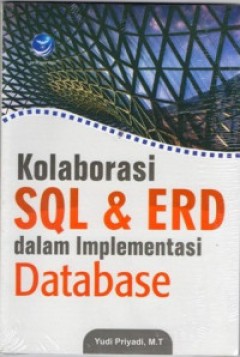
Kolaborasi SQL & ERD dalam implementasi database
- Edition
- -
- ISBN/ISSN
- 9789792921953
- Collation
- xii, 126 p. : ill. ; 23 cm.
- Series Title
- -
- Call Number
- 025.04 Yud k
- Edition
- -
- ISBN/ISSN
- 9789792921953
- Collation
- xii, 126 p. : ill. ; 23 cm.
- Series Title
- -
- Call Number
- 025.04 Yud k

The elements of statistical learning : data mining, inference, and prediction…
- Edition
- Second edition
- ISBN/ISSN
- 9780387848570
- Collation
- xxii, 745 p. : ill. : ind.; 24 cm.
- Series Title
- -
- Call Number
- 006.3/1 Has e
- Edition
- Second edition
- ISBN/ISSN
- 9780387848570
- Collation
- xxii, 745 p. : ill. : ind.; 24 cm.
- Series Title
- -
- Call Number
- 006.3/1 Has e

Developing a Prototype System to Record Drug-Drug Interactions Based on Datas…
Development of Drugs provide specific information on drug targets, mechanism, and interaction with other drugs. This information is important in order to prevent adverse drug reactions when prescribing more than 1 drugs. Electonic databases like Drugbank provide stotrage and access of this information to the public mass. However, not all drug databases are freely available making it hard to aut…
- Edition
- -
- ISBN/ISSN
- -
- Collation
- -
- Series Title
- -
- Call Number
- BI 21-003

Embedded Neural Network Processing System for General Purpose Assistive Tech…
Assistive technology (AT) is invaluable to people with special educational needs and disabilities, enabling them to function more efficiently. Designed with low power consumption and a GPU capable of running AI frameworks, NVIDIA's Jetson Nano is an affordable embedded system device. With this system, users will be mobile and connected to any computer with an appropriate interface, and able…
- Edition
- -
- ISBN/ISSN
- -
- Collation
- -
- Series Title
- -
- Call Number
- EP BI001
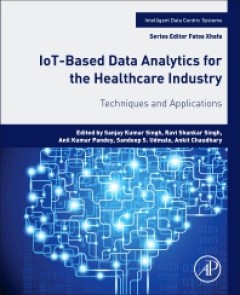
IoT-based data analytics for the healthcare industry : techniques and applica…
- Edition
- -
- ISBN/ISSN
- 9780128214725
- Collation
- xx, 320 p. : ill. : ind. ; 24 cm.
- Series Title
- -
- Call Number
- 610.21 IoT
- Edition
- -
- ISBN/ISSN
- 9780128214725
- Collation
- xx, 320 p. : ill. : ind. ; 24 cm.
- Series Title
- -
- Call Number
- 610.21 IoT

Application of omics, AI and blockchain in bioinformatics research
- Edition
- -
- ISBN/ISSN
- 9789811203572
- Collation
- ix, 192 p. : ill. : ind. ; 24 cm.
- Series Title
- -
- Call Number
- 610.285 App
- Edition
- -
- ISBN/ISSN
- 9789811203572
- Collation
- ix, 192 p. : ill. : ind. ; 24 cm.
- Series Title
- -
- Call Number
- 610.285 App

Research and Development-New Product Development at PT. Meprofarm
PT Meprofarm is a pharmaceutical company founded in 1973 by Bapak Ir. Wanne Mardiwidyo. In the time of the internship, there are 2 main buildings, MEPRO-1 and MEPRO-2. Research and development department falls under the Manufacturing department, which is one of four main departments in PT Meprofarm. Research and development team focuses on drug development, one of the divisions is the new p…
- Edition
- -
- ISBN/ISSN
- -
- Collation
- -
- Series Title
- -
- Call Number
- PHA 22-005
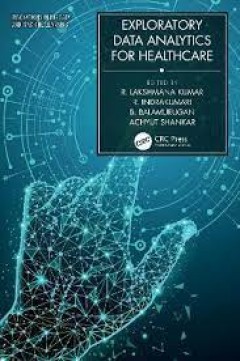
Exploratory data analytics for healthcare
Exploratory data analysis helps to recognize natural patterns hidden in the data. This book describes the tools for hypothesis generation by visualizing data through graphical representation and provides insight into advanced analytics concepts in an easy way. The book addresses the complete data visualization technologies workflow, explores basic and high-level concepts of computer science and…
- Edition
- -
- ISBN/ISSN
- 9780367506919
- Collation
- xiii, 289 p. : ill. ; 24 cm.
- Series Title
- -
- Call Number
- 610.285 Exp

Business Statistics Using Excel
- Edition
- -
- ISBN/ISSN
- 9789354791567
- Collation
- xxxv, 648 p. : ill. : ind. ; 25 cm.
- Series Title
- -
- Call Number
- 330.015195 Pan b
- Edition
- -
- ISBN/ISSN
- 9789354791567
- Collation
- xxxv, 648 p. : ill. : ind. ; 25 cm.
- Series Title
- -
- Call Number
- 330.015195 Pan b

Big data untuk ilmu sosial
- Edition
- -
- ISBN/ISSN
- 9786023869510
- Collation
- xviii, 314 p. : ill. ; 23 cm.
- Series Title
- -
- Call Number
- 001.42 Nov b
- Edition
- -
- ISBN/ISSN
- 9786023869510
- Collation
- xviii, 314 p. : ill. ; 23 cm.
- Series Title
- -
- Call Number
- 001.42 Nov b

Practical statistics for data scientists : 50+ essential concepts using R and…
- Edition
- Second edition
- ISBN/ISSN
- 9781492072942
- Collation
- xvi, 342 p. : ill. : ind. ; 24 cm.
- Series Title
- -
- Call Number
- 001.422 Bru p
- Edition
- Second edition
- ISBN/ISSN
- 9781492072942
- Collation
- xvi, 342 p. : ill. : ind. ; 24 cm.
- Series Title
- -
- Call Number
- 001.422 Bru p

Text analytics : an introduction to the science and applications of unstructu…
- Edition
- -
- ISBN/ISSN
- 9781032245263
- Collation
- xxvii,230 p. : ill. : ind. ; 23 cm.
- Series Title
- -
- Call Number
- 006.312 Atk t
- Edition
- -
- ISBN/ISSN
- 9781032245263
- Collation
- xxvii,230 p. : ill. : ind. ; 23 cm.
- Series Title
- -
- Call Number
- 006.312 Atk t

Python data science handbook : essential tools for working with data
- Edition
- -
- ISBN/ISSN
- 9781491912058
- Collation
- xvi, 529 p. : ill. : ind. ; 24 cm
- Series Title
- -
- Call Number
- 006.312 Van p
- Edition
- -
- ISBN/ISSN
- 9781491912058
- Collation
- xvi, 529 p. : ill. : ind. ; 24 cm
- Series Title
- -
- Call Number
- 006.312 Van p

Data science from scratch : first principles with Python second edition
- Edition
- Second edition
- ISBN/ISSN
- 9781492041139
- Collation
- xvii, 384 p. : ill. : ind. ; 24 cm
- Series Title
- -
- Call Number
- 005.75 Gru d
- Edition
- Second edition
- ISBN/ISSN
- 9781492041139
- Collation
- xvii, 384 p. : ill. : ind. ; 24 cm
- Series Title
- -
- Call Number
- 005.75 Gru d
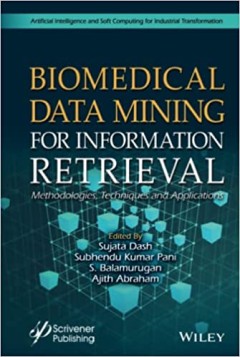
Biomedical data mining for information retrieval: methodologies, techniques a…
- Edition
- -
- ISBN/ISSN
- 9781119711247
- Collation
- xx, 415 p. : ill. : ind. ; 24 cm.
- Series Title
- -
- Call Number
- 006.312 Bio
- Edition
- -
- ISBN/ISSN
- 9781119711247
- Collation
- xx, 415 p. : ill. : ind. ; 24 cm.
- Series Title
- -
- Call Number
- 006.312 Bio

Systematic Approaches to a successful Literature Review
Showing you how to take a structured and organized approach to a wide range of literature review types, this book helps you to choose which approach is right for your research. Packed with constructive tools, examples, case studies and hands-on exercises, the book covers the full range of literature review techniques. New to This Edition: Full re-organization takes you step-by-step through …
- Edition
- Second Edition
- ISBN/ISSN
- 9781473912465
- Collation
- -
- Series Title
- -
- Call Number
- 028.7 BOO s
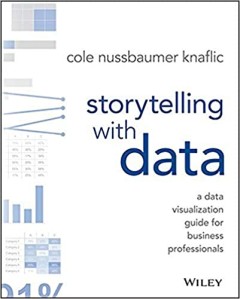
Storytelling with data; a Data visualization guide for business profesionals
Storytelling with Data teaches you the fundamentals of data visualization and how to communicate effectively with data. You'll discover the power of storytelling and the way to make data a pivotal point in your story. The lessons in this illuminative text are grounded in theory, but made accessible through numerous real-world examples—ready for immediate application to your next graph or pres…
- Edition
- 1st Edition
- ISBN/ISSN
- 9781119002253
- Collation
- -
- Series Title
- -
- Call Number
- 001.4226 KNA s
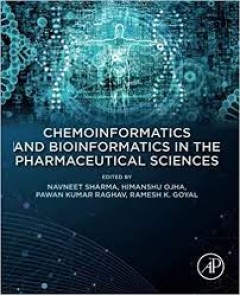
Chemoinformatics and bioinformatics in the pharmaceutical sciences
- Edition
- -
- ISBN/ISSN
- 9780128217481
- Collation
- xviii, 494 p. : ill. : ind. ; 24 cm.
- Series Title
- -
- Call Number
- 615.10285 Che
- Edition
- -
- ISBN/ISSN
- 9780128217481
- Collation
- xviii, 494 p. : ill. : ind. ; 24 cm.
- Series Title
- -
- Call Number
- 615.10285 Che

Logic and critical thinking in the biomedical sciences : volume two: deductio…
Logic and Critical Thinking in the Biomedical Sciences: Volume I: Deductions Based upon Simple Observations provides biomedical students and scientists with a repertoire of deductive non-mathematical methods, that helps them draw useful inferences from their own data. The past decade has witnessed a huge increase in the number of books describing advanced mathematical methods for data analysis;…
- Edition
- -
- ISBN/ISSN
- 9780128213698
- Collation
- xx, 269 p. : ill. ; 23 cm.
- Series Title
- -
- Call Number
- 029.95 Ber l
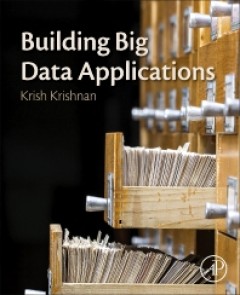
Building big data applications
- Edition
- -
- ISBN/ISSN
- 9780128157466
- Collation
- xiv, 227 p. : ill. : ind. ; 24 cm.
- Series Title
- -
- Call Number
- 005.7 Kri b
- Edition
- -
- ISBN/ISSN
- 9780128157466
- Collation
- xiv, 227 p. : ill. : ind. ; 24 cm.
- Series Title
- -
- Call Number
- 005.7 Kri b
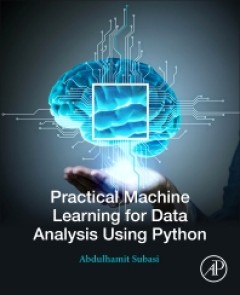
Practical machine learning for data analysis using python
- Edition
- -
- ISBN/ISSN
- 9780128213797
- Collation
- xiii, 519 p. : ill. : ind. ; 24 cm.
- Series Title
- -
- Call Number
- 006.31 Sub p
- Edition
- -
- ISBN/ISSN
- 9780128213797
- Collation
- xiii, 519 p. : ill. : ind. ; 24 cm.
- Series Title
- -
- Call Number
- 006.31 Sub p
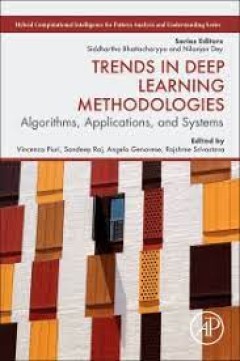
Trends in deep learning methodologies : algorithms, applications, and systems
- Edition
- -
- ISBN/ISSN
- 9780128222263
- Collation
- xvii, 288 p. : ill. : ind. ; 23 cm.
- Series Title
- -
- Call Number
- 006.312 Tre
- Edition
- -
- ISBN/ISSN
- 9780128222263
- Collation
- xvii, 288 p. : ill. : ind. ; 23 cm.
- Series Title
- -
- Call Number
- 006.312 Tre
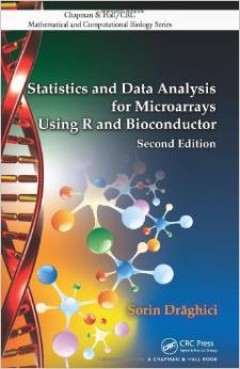
Statistics and data analysis for microarrays using R and Bioconductor
Richly illustrated in color, Statistics and Data Analysis for Microarrays Using R and Bioconductor, Second Edition provides a clear and rigorous description of powerful analysis techniques and algorithms for mining and interpreting biological information. Omitting tedious details, heavy formalisms, and cryptic notations, the text takes a hands-on, example-based approach that teaches students th…
- Edition
- -
- ISBN/ISSN
- 9781439809754
- Collation
- xlviii, 1042 p. : ill. : ind. ; 25 cm
- Series Title
- -
- Call Number
- 572.8636 Dra s
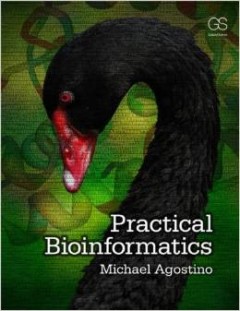
Practical bioinformatics
Practical Bioinformatics is specifically designed for biology majors, with a heavy emphasis on the steps required to perform bioinformatics analysis to answer biological questions. It is written for courses that have a practical, hands-on element and contains many exercises (for example, database searches, protein analysis, data interpretation) to complement the straightforward and practical to…
- Edition
- -
- ISBN/ISSN
- 9780815344568
- Collation
- xi, 367 p. : ill. : ind. ; 28 cm.
- Series Title
- -
- Call Number
- 572.8633 Ago p

Protein metabolism and nutrition
- Edition
- -
- ISBN/ISSN
- 0408706694
- Collation
- ix, 515 p. : ill. ; 24 cm.
- Series Title
- -
- Call Number
- 636.08 Col p
- Edition
- -
- ISBN/ISSN
- 0408706694
- Collation
- ix, 515 p. : ill. ; 24 cm.
- Series Title
- -
- Call Number
- 636.08 Col p

Mammalian protein metabolism volume I
- Edition
- -
- ISBN/ISSN
- 0125106041
- Collation
- v. 566p. 24 cm.
- Series Title
- -
- Call Number
- 591.13 Mun m
- Edition
- -
- ISBN/ISSN
- 0125106041
- Collation
- v. 566p. 24 cm.
- Series Title
- -
- Call Number
- 591.13 Mun m
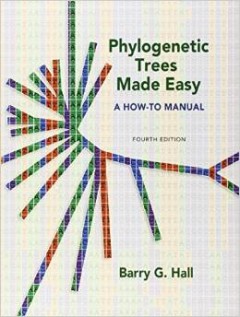
Phylogenetic trees made easy : a how-to manual
Reflecting new software updates, and with more advanced topics, the Fourth Edition helps the student create phylogenetic trees from protein or nucleic acid sequence data. The reader is taken step-by-step from identifying the sequences required, to drawing the tree for presentation to an intended audience.
- Edition
- 4th ed.
- ISBN/ISSN
- 97808789360699
- Collation
- xiv, 282 p. : ill. : ind. ; 24 cm.
- Series Title
- -
- Call Number
- 578.012 Hal p
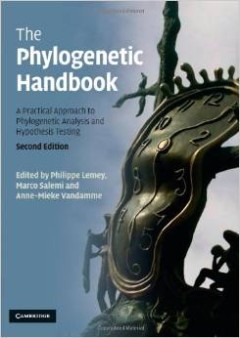
The phylogenetic handbook : a practical approach to phylogenetic analysis and…
The Phylogenetic Handbook is a broad, hands on guide to theory and practice of nucleotide and protein phylogenetic analysis. This second edition includes six new chapters, covering topics such as Bayesian inference, tree topology testing and the impact of recombination on phylogenies, as well as a detailed section on molecular adaptation. The book has a stronger focus on hypothesis testing than…
- Edition
- 2nd
- ISBN/ISSN
- 9780521730716
- Collation
- xxvi, 723 p. : ill. : ind. ; 26 cm.
- Series Title
- -
- Call Number
- 578.012 Phy

Microarray bioinformatics
DNA microarrays have revolutionized molecular biology and are becoming a standard tool in the field. Dov Stekel's book is a comprehensive guide to the mathematics, statistics, and computing required to use microarrays successfully. Unlike traditional molecular biology, the successful use of DNA microarrays requires the application of statistics and computing to design the arrays and experiments…
- Edition
- -
- ISBN/ISSN
- 9780521525879
- Collation
- 263 p. : ill. : ind. ; 26 cm.
- Series Title
- -
- Call Number
- 572.8636 Ste m
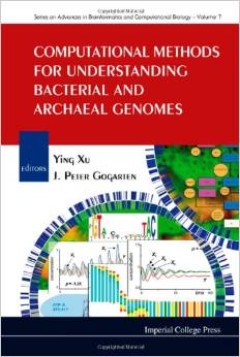
Computational methods for understanding bacterial and archaeal genomes
Over 500 prokaryotic genomes have been sequenced to date, and thousands more have been planned for the next few years. While these genomic sequence data provide unprecedented opportunities for biologists to study the world of prokaryotes, they also raise extremely challenging issues such as how to decode the rich information encoded in these genomes. This comprehensive volume includes a collect…
- Edition
- -
- ISBN/ISSN
- 9781860949821
- Collation
- xix, 473 p. : ill. : ind. ; 26 cm.
- Series Title
- -
- Call Number
- 572.860285 Com

Bioinformatics methods and protocols
Computers have become an essential component of modern biology. They help to manage the vast and increasing amount of biological data and continue to play an integral role in the discovery of new biological relationships. This in silico approach to biology has helped to reshape the modern biological sciences. With the biological revolution now among us, it is imperative that each scientist deve…
- Edition
- volume 132
- ISBN/ISSN
- 9781617371561
- Collation
- xi, 500 p. : ill. ; 24 cm.
- Series Title
- -
- Call Number
- 572.8'0285 Bio
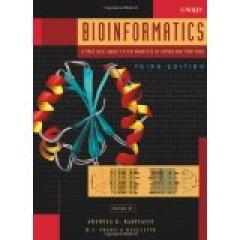
Bioinformatics : a practical guide to the analysis of genes and proteins
This fully revised version of a world-renowned bestseller provides readers with a practical guide covering the full scope of key concepts in bioinformatics, from databases to predictive and comparative algorithms. Using relevant biological examples, the book provides background on and strategies for using many of the most powerful and commonly used computational approaches for biological discov…
- Edition
- 3rd
- ISBN/ISSN
- 9780471478782
- Collation
- xviii, 540 p. : ill. : ind. ; 25 cm.
- Series Title
- -
- Call Number
- 572.8 Bax b

Protein bioinformatics : from sequence to function
One of the most pressing tasks in biotechnology today is to unlock the function of each of the thousands of new genes identified every day. Scientists do this by analyzing and interpreting proteins, which are considered the task force of a gene. This single source reference covers all aspects of proteins, explaining fundamentals, synthesizing the latest literature, and demonstrating the most im…
- Edition
- -
- ISBN/ISSN
- 9788131222973
- Collation
- xix, 320 p. : ill. : ind. ; 25 cm.
- Series Title
- -
- Call Number
- 572.6 Gro p

Bioinformatics : sequence and genome analysis
As more species' genomes are sequenced, computational analysis of these data has become increasingly important. The second, entirely updated edition of this widely praised textbook provides a comprehensive and critical examination of the computational methods needed for analyzing DNA, RNA, and protein data, as well as genomes. The book has been rewritten to make it more accessible to a wider au…
- Edition
- 2nd
- ISBN/ISSN
- 9780879697129
- Collation
- xii, 692 p. : ill. : ind. ; 28 cm
- Series Title
- -
- Call Number
- 572.8 Mou b
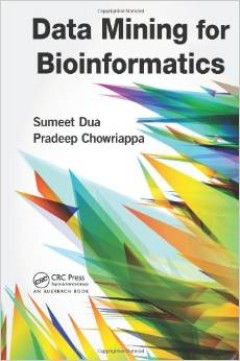
Data mining for bioinformatics
Covering theory, algorithms, and methodologies, as well as data mining technologies, Data Mining for Bioinformatics provides a comprehensive discussion of data-intensive computations used in data mining with applications in bioinformatics. It supplies a broad, yet in-depth, overview of the application domains of data mining for bioinformatics to help readers from both biology and computer scien…
- Edition
- -
- ISBN/ISSN
- 9780849328015
- Collation
- xix, 328 p. : ill. : ind. ; 24 cm
- Series Title
- -
- Call Number
- 572.330285 Dua d

Data mining techniques for the life sciences
Most life science researchers will agree that biology is not a truly theoretical branch of science. The hype around computational biology and bioinformatics beginning in the nineties of the 20th century was to be short lived (1, 2). When almost no value of practical importance such as the optimal dose of a drug or the three-dimensional structure of an orphan protein can be computed from fundame…
- Edition
- -
- ISBN/ISSN
- 9781603272407
- Collation
- xii, 407 p. : ill. ; 26 cm.
- Series Title
- -
- Call Number
- 572.330285 Dat
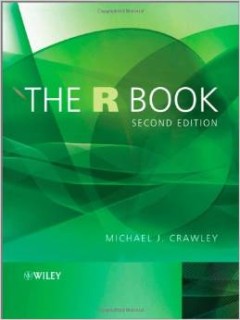
The R book
Hugely successful and popular text presenting an extensive and comprehensive guide for all R users The R language is recognized as one of the most powerful and flexible statistical software packages, enabling users to apply many statistical techniques that would be impossible without such software to help implement such large data sets. R has become an essential tool for understanding and carry…
- Edition
- 2nd
- ISBN/ISSN
- 9780470973929
- Collation
- xxi, 1051 p. : ill. : ind. ; 25 cm.
- Series Title
- -
- Call Number
- 519.50285 Cra r
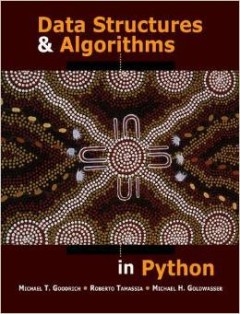
Data structures and algorithms in phyton
Based on the authors' market leading data structures books in Java and C++, this book offers a comprehensive, definitive introduction to data structures in Python by authoritative authors. Data Structures and Algorithms in Python is the first authoritative object-oriented book available for Python data structures. Designed to provide a comprehensive introduction to data structures and algorithm…
- Edition
- -
- ISBN/ISSN
- 9781118290279
- Collation
- xix, 748 p. : ill. : ind. ; 24 cm.
- Series Title
- -
- Call Number
- 005.133 Goo d
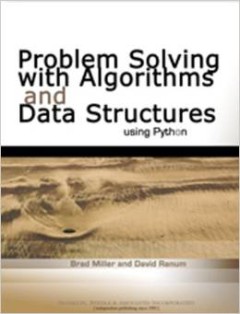
Problem solving with algorithms and data structures using phyton
- Edition
- -
- ISBN/ISSN
- 9781590280539
- Collation
- xi, 357 p. : ill. : ind. ; 24 cm.
- Series Title
- -
- Call Number
- 005.133 Mil p
- Edition
- -
- ISBN/ISSN
- 9781590280539
- Collation
- xi, 357 p. : ill. : ind. ; 24 cm.
- Series Title
- -
- Call Number
- 005.133 Mil p

Database systems : a practical approach to design, implementation, and manage…
Database Systems is ideal for a one- or two-term course in database management or database design in an undergraduate or graduate level course. With its comprehensive coverage, this book can also be used as a reference for IT professionals. This best-selling text introduces the theory behind databases in a concise yet comprehensive manner, providing database design methodology that can be us…
- Edition
- 6th
- ISBN/ISSN
- 9781292061184
- Collation
- 1329 p. : ill. : ind. ; 23 cm.
- Series Title
- -
- Call Number
- 005.74 Con d
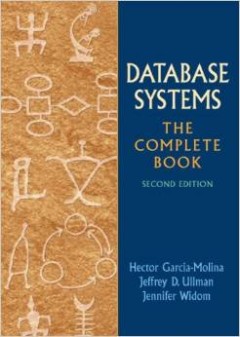
Database systems : the complete book
Database Systems: The Complete Book is ideal for Database Systems and Database Design and Application courses offered at the junior, senior and graduate levels in Computer Science departments. A basic understanding of algebraic expressions and laws, logic, basic data structure, OOP concepts, and programming environments is implied. Written by well-known computer scientists, this introduction…
- Edition
- 2nd
- ISBN/ISSN
- 9780131873254
- Collation
- xxxvi, 1203 p. : ill. : ind. ; 25 cm.
- Series Title
- -
- Call Number
- 005.74 Gar d

Database systems : introduction to databases and data warehouses
An introductory, yet comprehensive, database textbook intended for use in undergraduate and graduate information systems database courses. This text also provides practical content to current and aspiring information systems, business data analysis, and decision support industry professionals. Database Systems: Introduction to Databases and Data Warehouses covers both analytical and operati…
- Edition
- -
- ISBN/ISSN
- 9780132575676
- Collation
- xxv, 375 p. : ill. : ind. ; 28 cm.
- Series Title
- -
- Call Number
- 005.74 Juk d
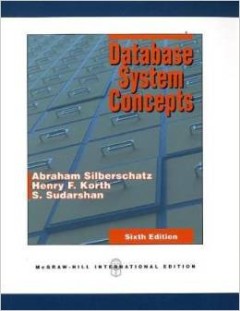
Database system concepts
Database System Concepts by Silberschatz, Korth and Sudarshan is now in its 6th edition and is one of the cornerstone texts of database education. It presents the fundamental concepts of database management in an intuitive manner geared toward allowing students to begin working with databases as quickly as possible. The text is designed for a first course in databases at the junior/senior under…
- Edition
- 6th
- ISBN/ISSN
- 9780071289597
- Collation
- xxvi, 1349 p. : ill. : ind. ; 23 cm.
- Series Title
- -
- Call Number
- 005.74 Sil d
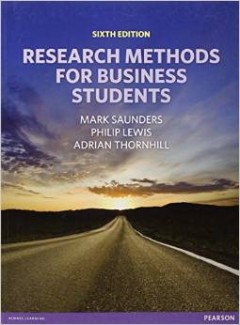
Research methods for business students
A comprehensive introduction to research methods in business for students planning or undertaking a dissertation or extensive research project in business and management. The sixth edition of Research Methods for Business Students brings the theory, philosophy and techniques of research to life and enables students to understand the practical relevance of the research methods. A highly accessib…
- Edition
- 6th
- ISBN/ISSN
- 9780273750758
- Collation
- xxxi, 696 p. : ill. : ind. ; 27 cm.
- Series Title
- -
- Call Number
- 650.072 Sau r
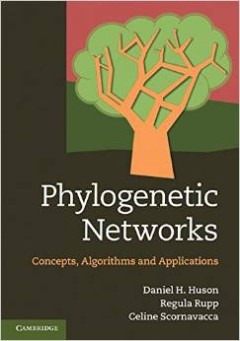
Phylogenetic networks : concepts, algorithms and applications
The evolutionary history of species is traditionally represented using a rooted phylogenetic tree. However, when reticulate events such as hybridization, horizontal gene transfer or recombination are believed to be involved, phylogenetic networks that can accommodate non-treelike evolution have an important role to play. This book provides the first interdisciplinary overview of phylogenetic ne…
- Edition
- -
- ISBN/ISSN
- 9780521755962
- Collation
- xii, 362 p. : ill. : ind. ; 25 cm.
- Series Title
- -
- Call Number
- 578.012 Hus p

Data mining for genomics and proteomics : analysis of gene and protein expres…
Data Mining for Genomics and Proteomics uses pragmatic examples and a complete case study to demonstrate step-by-step how biomedical studies can be used to maximize the chance of extracting new and useful biomedical knowledge from data. It is an excellent resource for students and professionals involved with gene or protein expression data in a variety of settings.
- Edition
- -
- ISBN/ISSN
- 9780470163733
- Collation
- xvii, 319 p., ill. : ind. ; 25 cm.
- Series Title
- -
- Call Number
- 572.8 Dzi d
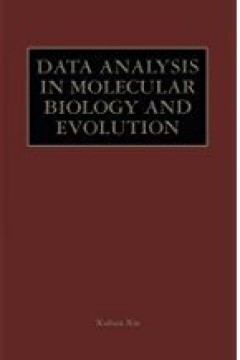
Data analysis in molecular biology and evolution
Data Analysis in Molecular Biology and Evolution introduces biologists to DAMBE, a proprietary, user-friendly computer program for molecular data analysis. The unique combination of this book and software will allow biologists not only to understand the rationale behind a variety of computational tools in molecular biology and evolution, but also to gain instant access to these tools for use in…
- Edition
- -
- ISBN/ISSN
- 9781475784350
- Collation
- xv, 277 p. : ill. : ind. ; 25 cm.
- Series Title
- -
- Call Number
- 572.8'0285 Xuh d
 Computer Science, Information & General Works
Computer Science, Information & General Works  Philosophy & Psychology
Philosophy & Psychology  Religion
Religion  Social Sciences
Social Sciences  Language
Language  Pure Science
Pure Science  Applied Sciences
Applied Sciences  Art & Recreation
Art & Recreation  Literature
Literature  History & Geography
History & Geography